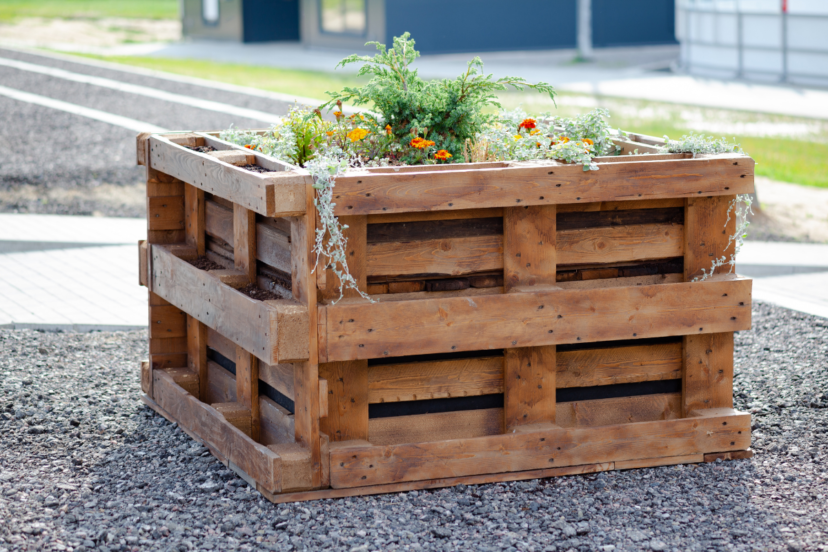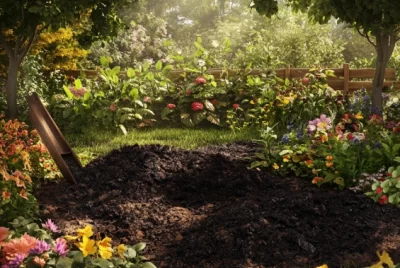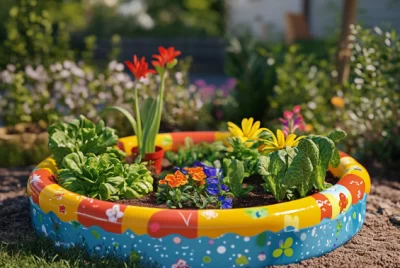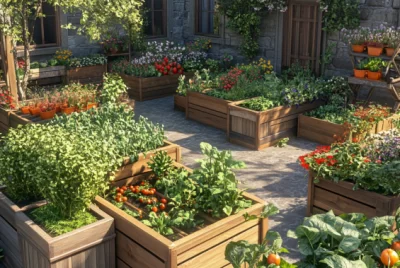Pallet Gardening: A Sustainable and Creative Gardening Solution
Introduction
I have always been fascinated by innovative and sustainable gardening techniques. One such technique that has caught my attention is pallet gardening. This method offers a unique and resourceful way to transform unused pallets into thriving green spaces. In this article, I will delve into the benefits and challenges of pallet gardening and provide helpful suggestions to ensure your success in this exciting endeavor.
What is Pallet Gardening?
Pallet gardening involves repurposing wooden pallets to create vertical or horizontal garden structures. These pallets serve as containers for plants, allowing you to grow a variety of herbs, flowers, and even vegetables in a compact and versatile manner. By upcycling pallets that would otherwise end up in landfills, pallet gardening embraces sustainability and recycling.
Benefits of Pallet Gardening
Sustainability and Recycling
The use of pallets aligns perfectly with the principles of sustainability. By repurposing pallets, you contribute to reducing waste and minimizing your environmental footprint. It’s a creative way to transform discarded materials into functional and beautiful garden spaces.
Pallet Gardening and Space Optimization
Limited on garden space? Pallet gardening is the solution. These vertical gardens make the most of small areas, such as balconies, patios, and even walls. By going vertical, you maximize your growing space and create a lush oasis even in confined areas.
Accessibility and Mobility
One of the advantages of pallet gardening is its mobility. You can easily move the pallets around to optimize sunlight exposure or to create a different visual arrangement. Whether you’re renting a property or frequently change your outdoor setup, pallet gardening offers flexibility and convenience.
Versatility and Creativity
Pallets provide a versatile canvas for your creativity to flourish. You can customize the design and arrangement of your pallet garden, allowing you to experiment with different planting layouts and styles. From herb gardens to cascading flower displays, the possibilities are endless.
Challenges of Pallet Gardening
While pallet gardening offers numerous benefits, it’s important to be aware of the challenges that come with this gardening method. By understanding and addressing these challenges, you can ensure the success of your pallet garden.
Limited Soil Depth
Pallets have shallow compartments, which restricts the depth of soil available to plants. This limitation can hinder the growth of certain crops or plants with extensive root systems. Selecting plants that thrive in shallow soil or incorporating techniques like vertical gardening can overcome this challenge.
Drainage and Moisture Control
Proper drainage is crucial for healthy plant growth, and as with other types of container gardening, pallets may not inherently provide adequate drainage. It’s essential to create drainage holes and use a well-draining soil mix to prevent waterlogged roots. Regular monitoring of soil moisture levels and appropriate watering practices will ensure optimal plant health.
Plant Selection and Compatibility
Not all plants are suitable for pallet gardening. Some plants require more space, sunlight, or specific growing conditions that may not be easily met within the confines of a pallet garden. Researching and selecting plants that are well-suited to compact gardening spaces will help you achieve thriving and harmonious plant growth.
Maintenance and Pests
Pallet gardens, like any other garden, require regular maintenance. Monitoring soil moisture, fertilizing appropriately, and pruning when necessary are important tasks. Additionally, pests can pose a challenge in any garden setting. Implementing organic pest control methods and regularly inspecting your plants will help prevent and address pest infestations effectively.
Getting Started with Pallet Gardening
Now that you understand the benefits and challenges of pallet gardening, let’s dive into the essential steps to get started:
Choosing the Right Pallets
Select pallets that are in good condition, free from chemicals or treatments harmful to plants. Look for pallets marked with the “HT” stamp, indicating they have been heat-treated rather than chemically treated.
Preparing the Pallets
Clean the pallets thoroughly, removing any dirt or debris. Sand down any rough surfaces and apply a protective sealant or paint if desired. This step ensures the longevity of the pallets and prevents potential harm to plants.
Pallet Gardening Soil and Plant Selection
Choose a high-quality, well-draining soil mix suitable for container gardening. Consider the specific needs of the plants you wish to grow, such as sunlight requirements and water preferences. Opt for compact or dwarf varieties for vegetables if you have limited soil depth.
Watering and Fertilizing
Monitor the moisture level of your pallet garden regularly and water accordingly. Apply a balanced organic fertilizer or compost to provide essential nutrients for healthy plant growth. Avoid over-fertilization, as it can lead to nutrient imbalances and damage the plants.
Maintenance and Pest Control
Regularly inspect your pallet garden for signs of pests or diseases. Prune any dead or damaged foliage and maintain a clean growing environment. Implement organic pest control methods, such as introducing beneficial insects or using homemade pest repellents.
Tips and Suggestions for Successful Pallet Gardening
To enhance your pallet gardening experience, consider implementing the following tips and suggestions:
Vertical Gardening Techniques
Explore vertical gardening techniques such as attaching planters or pockets to the sides of your pallets. This maximizes space utilization and creates an eye-catching visual display.
Companion Planting
Practice companion planting by growing compatible plants together. Certain plant combinations can deter pests, improve pollination, or enhance flavors. For example, planting marigolds near tomatoes helps repel aphids.
Creative Plant Arrangements
Experiment with creative plant arrangements to create an aesthetically pleasing pallet garden. Combine plants with different heights, textures, and colors to design captivating displays.
Seasonal Adaptations
Adapt your pallet garden to different seasons by swapping out plants or incorporating seasonal decorations. Embrace the versatility of pallet gardening to create ever-changing displays throughout the year.
Conclusion
Pallet gardening offers a sustainable and creative gardening solution that maximizes space, promotes recycling, and encourages your green thumb to flourish. By understanding the benefits, challenges, and best practices, you can embark on a successful pallet gardening journey. So, grab those pallets, unleash your creativity, and create a vibrant green oasis in even the smallest of spaces!
FAQs
Can I use any type of pallet for pallet gardening?
No, it’s essential to use pallets that are heat-treated (marked with “HT”) and free from harmful chemicals.
What types of plants are best suited for pallet gardening?
Compact or dwarf varieties of herbs, flowers, and vegetables work well due to the limited soil depth.
How often should I water my pallet garden?
Regularly monitor the moisture level of the soil and water when it starts to dry out. The frequency may vary depending on environmental factors.
How can I prevent pests in my pallet garden?
Implement organic pest control methods like introducing beneficial insects, using homemade repellents, and maintaining a clean growing environment.
Can I move my pallet garden around?
Yes, one of the advantages of pallet gardening is its mobility. You can easily move the pallets to optimize sunlight exposure or change the visual arrangement.




